Tonto National Forest
- December 26, 2023
- 0 comment
Located within the heart of Arizona, the Tonto National Forest unfolds as a sprawling tapestry of natural wonders, spanning an impressive 2,873,200 acres and standing as the largest among the state’s six national forests. As the ninth largest national forest in the United States, Tonto captivates with its diverse landscapes, ranging from the sun-drenched expanses of the Sonoran Desert to the towering ponderosa pine forests along the Mogollon Rim. Notably, this forest holds the distinction of being the most visited “urban” forest in the nation, drawing nature enthusiasts from the bustling Phoenix metropolitan area to its tranquil wilderness. Managed by the USDA Forest Service, Tonto National Forest reveals a rich tapestry of outdoor experiences, inviting exploration through activities such as hiking, backpacking, and horseback riding.

Beyond its recreational allure, the forest has weathered challenges like the 2020 Bush Fire, a testament to the delicate balance between human interaction and the preservation of this natural sanctuary. With its diverse ecosystems, federally designated wilderness areas, and commitment to conservation, Tonto National Forest beckons, promising a captivating escape into the untamed beauty of the American Southwest.
Characterizing Features of the Tonto National Forest
- Expansive Wilderness for Exploration: Tonto National Forest sprawls across an extensive 2,873,200 acres, offering a vast and diverse wilderness for outdoor enthusiasts. From the rugged terrain of the Sonoran Desert, situated at 1,400 feet in elevation, to the pine-clad heights of the Mogollon Rim at 7,400 feet, the forest provides a varied landscape for exploration through activities like hiking, backpacking, and horseback riding.
- Largest Urban Forest in the U.S.: Not only is Tonto National Forest a haven for nature lovers, but it also holds the distinction of being the most visited “urban” forest in the United States. Its strategic location, enveloping the Phoenix metropolitan area to the south, makes it easily accessible to a large population, drawing both locals and visitors seeking respite in its natural beauty.
- Diverse Scenery and Ecosystems: The forest’s diverse scenery encompasses not only the iconic saguaros of the Sonoran Desert but also the enchanting ponderosa pine forests along the Mogollon Rim. This variety in ecosystems fosters a rich biodiversity, making Tonto National Forest a unique mosaic of flora and fauna.
- Wildfire Challenges and Resilience: Tonto National Forest has faced challenges, including the devastating Bush Fire of June 2020, which burned 193,455 acres. Despite the adversity, the incident showcased the forest’s resilience, as the fire was successfully contained by July 1, leading to subsequent rehabilitation efforts and a testament to the dedicated management of this vast and cherished landscape.
- Notable Cold Water Reservoirs: The forest is home to six notable cold water reservoirs, including Bartlett Reservoir and a chain of dams along the Salt River. From the serene waters of Saguaro Lake to the expansive Theodore Roosevelt Lake, these reservoirs provide scenic beauty and recreational opportunities, including fishing, boating, and water sports.
- Federally Designated Wilderness Areas: Tonto National Forest hosts eight federally designated wilderness areas, each contributing to the preservation of its rugged beauty. From the Superstition Wilderness to the Hellsgate Wilderness, these areas provide a sanctuary for those seeking a more primitive and unspoiled connection with nature.
- Historical Significance and Evolution: Established as the Tonto Forest Reserve in 1905, the forest has evolved over the years, transitioning into a National Forest on March 4, 1907. The addition of lands and its contribution to conservation efforts underscore its historical significance and commitment to protecting the region’s natural resources.
- Management of Habitat and Resources: Beyond its recreational offerings, Tonto National Forest plays a crucial role in managing habitats for diverse wildlife, fish, and rare plant species. The forest’s management responsibilities extend to mines, roads, trails, riparian areas, and wilderness expanses, reflecting a comprehensive approach to land stewardship.
In essence, Tonto National Forest stands as a multifaceted natural treasure, weaving together its expansive landscapes, recreational opportunities, and conservation efforts to create an enduring tapestry of environmental significance and public enjoyment.
History
In the early 20th century, Tonto National Forest emerged as a critical response to the growing awareness of the need for conservation and sustainable land management in the United States. As part of a broader movement led by figures like President Theodore Roosevelt, who sought to preserve the nation’s natural resources for future generations, Tonto Forest Reserve was established to protect the unique ecosystems and diverse landscapes of central Arizona.
The forest’s history is deeply intertwined with the region’s cultural and economic development. Mining activities, in particular, played a significant role in the early years, with the forest providing valuable resources such as timber and minerals. As the demand for these resources increased, the importance of responsible forest management became apparent, leading to the transfer of forest reserves to the U.S. Forest Service in 1906.
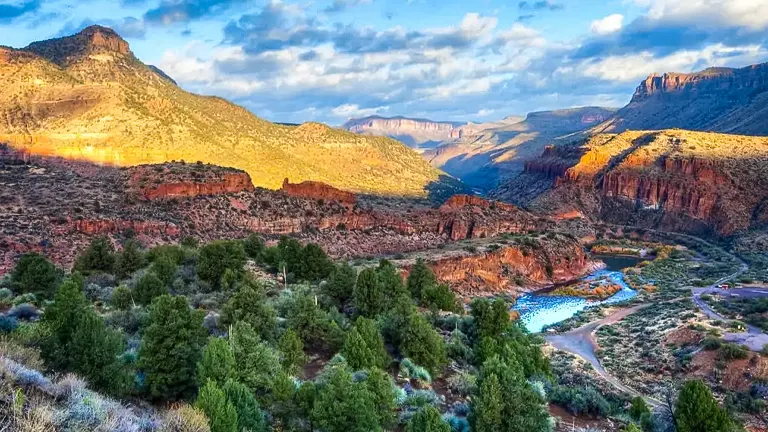
Over the years, Tonto National Forest evolved to meet the changing needs of both the environment and the communities it served. The addition of the Pinal Mountains National Forest in 1908 and parts of Crook National Forest in 1953 reflected the ongoing commitment to expanding protected areas and ensuring the sustainable use of natural resources.
The forest’s management practices have adapted to address contemporary challenges, including wildfire management and rehabilitation efforts. The Bush Fire of 2020, one of Arizona’s largest wildfires, served as a poignant reminder of the delicate balance between nature and human activities. The incident prompted not only emergency response measures but also a renewed focus on the importance of public awareness and responsible recreation within the forest.
Today, Tonto National Forest stands as a living testament to the foresight of early conservationists and the ongoing dedication of the U.S. Forest Service. Its rich history, marked by conservation milestones and adaptive management strategies, contributes to the broader narrative of environmental stewardship in the American West. As visitors explore its diverse landscapes and engage in recreational activities, they become part of a legacy that seeks to harmonize human interaction with the enduring beauty of Tonto National Forest.
Importance in Conservation and Recreation of Tonto National Forest
Tonto National Forest holds profound significance in the realms of both conservation and recreation, embodying a harmonious balance between safeguarding natural ecosystems and providing a haven for outdoor enthusiasts. Its vast expanse, spanning 2,873,200 acres, serves as a critical refuge for diverse flora and fauna, contributing significantly to the conservation of Arizona’s unique biodiversity. The forest’s federally designated wilderness areas, including the Superstition Wilderness and Hellsgate Wilderness, play a pivotal role in preserving pristine environments and offering crucial habitats for wildlife.
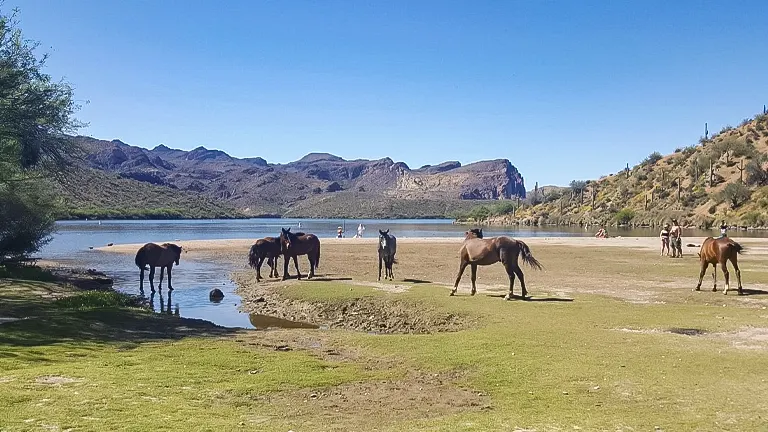
Beyond its ecological importance, Tonto National Forest stands as a recreational jewel, drawing visitors from the Phoenix metropolitan area and beyond. With its expansive trail systems, cold water reservoirs, and varied landscapes—from the Sonoran Desert to the Mogollon Rim—it offers a diverse playground for hikers, campers, anglers, and nature enthusiasts. The careful stewardship of Tonto National Forest reflects a commitment to sustaining this delicate balance, ensuring that future generations can both appreciate its natural wonders and actively participate in the legacy of responsible recreation and environmental conservation.
Unique Location of Tonto National Forest
Located within the heart of Arizona, the Tonto National Forest occupies a truly unique location, offering a striking blend of contrasting landscapes that encapsulate the diverse beauty of the American Southwest. Extending over 2,873,200 acres, Tonto spans from the sun-soaked expanses of the Sonoran Desert, with elevations as low as 1,400 feet, to the lofty heights of the Mogollon Rim, reaching an impressive 7,400 feet.

What sets Tonto apart is its proximity to the bustling Phoenix metropolitan area, serving as an accessible wilderness retreat for millions of residents. Bordered by the Mogollon Rim to the north and the San Carlos and Fort Apache Indian Reservation to the east, the forest’s strategic location places it at the intersection of urban life and untamed nature. This unique juxtaposition contributes to Tonto’s distinction as the most visited “urban” forest in the United States, allowing residents and visitors alike to escape the cityscape and immerse themselves in the breathtaking and diverse landscapes that define this exceptional region.
Diverse Vegetation and Unique Plant Species
- Saguaro Cacti (Carnegiea gigantea): The iconic saguaro cactus, with its towering stature and arms reaching towards the sky, is a defining feature of the Tonto National Forest. These slow-growing giants are well-adapted to the Sonoran Desert, storing water to endure arid conditions. Their presence creates a striking visual landscape, especially in the lower elevations of the forest.
- Ponderosa Pine (Pinus ponderosa): Dominating the higher elevations along the Mogollon Rim, the ponderosa pine is a majestic tree that characterizes the cooler and more shaded areas of Tonto National Forest. Recognizable by its tall trunk, distinctive bark, and bundles of long needles, this species contributes to the forest’s diverse ecosystems, providing habitat and adding to its scenic beauty.
- Creosote Bush (Larrea tridentata): Thriving in the arid expanses of the Sonoran Desert, the creosote bush is a resilient and aromatic shrub. Known for its distinctive scent after rainfall, it forms extensive stands in the lower elevations of the forest, showcasing the adaptability of plant life to harsh desert conditions.
- Agave Species: Various species of agave, such as the agave parryi and agave chrysantha, contribute to the unique flora of Tonto National Forest. These succulent plants are well-suited to the desert environment, with some species producing towering flower stalks before reaching the end of their life cycle.
- Cottonwood Trees (Populus deltoides): Along the riverbanks and riparian areas, cottonwood trees provide vital shade and contribute to the lush greenery surrounding water bodies. Their leaves rustle in the breeze, creating serene and cool oases within the forest, while also serving as habitats for a variety of bird species.
- Barrel Cacti (Ferocactus): Adding to the diversity of cactus species, barrel cacti are notable for their barrel-like shape and vibrant flowers. These hardy plants store water in their thick stems, allowing them to withstand the challenges of the arid desert climate within the Tonto National Forest.
- Willow Trees (Salix): Found along the edges of streams and water bodies, willow trees contribute to the riparian vegetation of the forest. Their flexible branches and green leaves provide crucial habitats for various wildlife, including nesting sites for birds and shelter for aquatic organisms.
- Cholla Cacti (Cylindropuntia): With their unique cylindrical joints and spiny appearance, cholla cacti are another distinctive component of the desert flora within the Tonto National Forest. They adapt to a range of elevations and are often seen in the transition zones between desert and higher-altitude ecosystems.
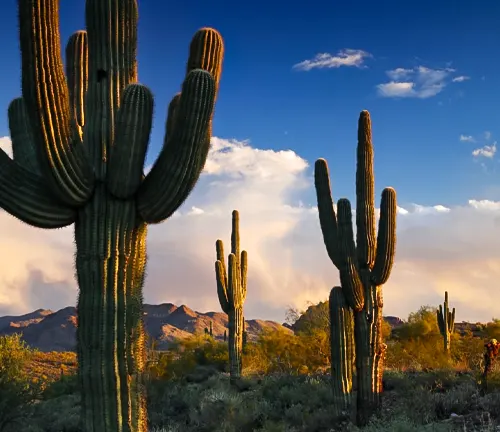
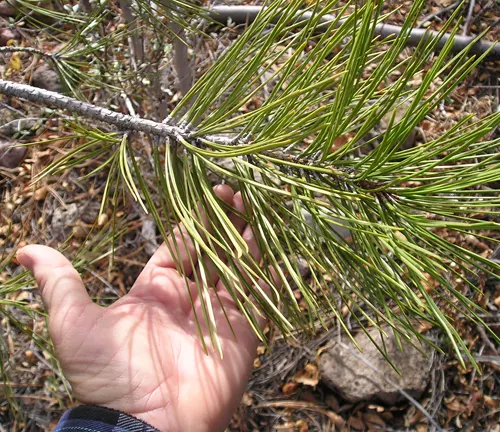
Fauna:
- Mule Deer (Odocoileus hemionus): Mule deer are a common sight in Tonto National Forest, gracefully navigating through the diverse landscapes, from the Sonoran Desert to the higher elevations of the forest. Their adaptability to various habitats makes them a key species in the region’s wildlife community.
- Cougar (Puma concolor): The elusive cougar, also known as mountain lion or puma, calls the Tonto National Forest home. These solitary and powerful predators play a crucial role in maintaining ecological balance by controlling herbivore populations and influencing the distribution of prey species.
- Bobcat (Lynx rufus): With its distinctive tufted ears and spotted coat, the bobcat is a stealthy inhabitant of Tonto National Forest. These small carnivores are skilled hunters, preying on small mammals and birds, and contribute to the forest’s biodiversity.
- Black Bear (Ursus americanus): Black bears roam the forested areas of Tonto, utilizing the diverse ecosystems for foraging and shelter. Their presence highlights the importance of the forest as a habitat for large mammals and emphasizes the need for conservation efforts to ensure their continued survival.
- Bald Eagle (Haliaeetus leucocephalus): Tonto National Forest provides vital habitat for the bald eagle, particularly along its water bodies. These majestic birds of prey nest in the towering trees along the rivers and lakes, contributing to the region’s significance as a sanctuary for avian species.
- Gila Monster (Heloderma suspectum): The Gila monster, a venomous lizard species, is an intriguing inhabitant of the Sonoran Desert within the forest. Known for its striking orange and black patterns, it is one of the few venomous lizards in North America, emphasizing the unique reptilian diversity in the area.
- Arizona Gray Squirrel (Sciurus arizonensis): Endemic to the Mogollon Rim and higher elevations, the Arizona gray squirrel is a charming resident of the ponderosa pine forests. Recognized by its gray fur and tufted ears, this squirrel plays a role in shaping the dynamics of forest ecosystems through its seed dispersal activities.
- Desert Bighorn Sheep (Ovis canadensis nelsoni): The rugged canyons and cliffs of Tonto National Forest provide a habitat for the desert bighorn sheep. These sure-footed mammals navigate the steep terrain with ease, showcasing the forest’s capacity to support a variety of ungulate species.
- Golden Eagle (Aquila chrysaetos): Golden eagles soar above the expansive landscapes of Tonto National Forest, utilizing the vast open spaces for hunting. These majestic raptors contribute to the rich birdlife in the forest, showcasing the diversity of avian species that rely on the area for sustenance.
- Sonoran Desert Toad (Incilius alvarius): In the lower elevations of the forest, the Sonoran Desert toad is a notable amphibian species. Recognized for its potent defensive toxins, it plays a role in the intricate web of interactions within the desert ecosystem.
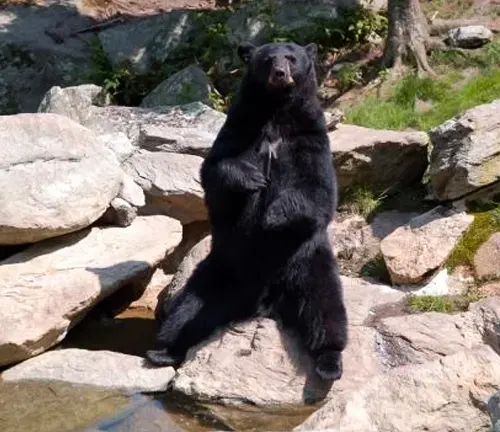
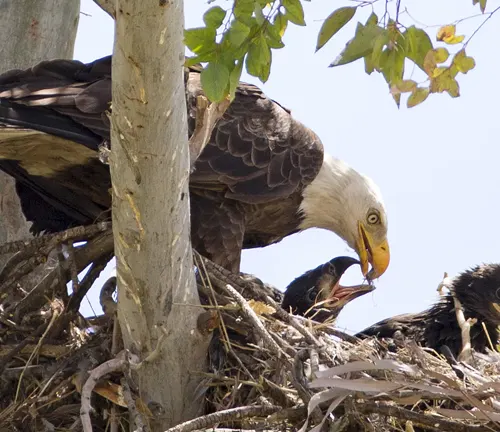
The fauna of Tonto National Forest represents a captivating array of species, each adapted to its specific habitat within the diverse landscapes of the forest. From large mammals to avian and reptilian inhabitants, the forest’s wildlife contributes to its ecological richness and underscores the importance of conservation efforts to preserve these diverse ecosystems.
Importance as a Wildlife Corridor and Habitat for Threatened Species
Tonto National Forest serves a pivotal role as a vital wildlife corridor and essential habitat, particularly for threatened and endangered species in the region. Its expansive and diverse landscapes provide a critical pathway for the movement of wildlife, facilitating the natural flow of species between different ecosystems. The forest’s significance as a wildlife corridor is particularly pronounced given its strategic location between the urbanized Phoenix metropolitan area and the pristine expanses of the Mogollon Rim.
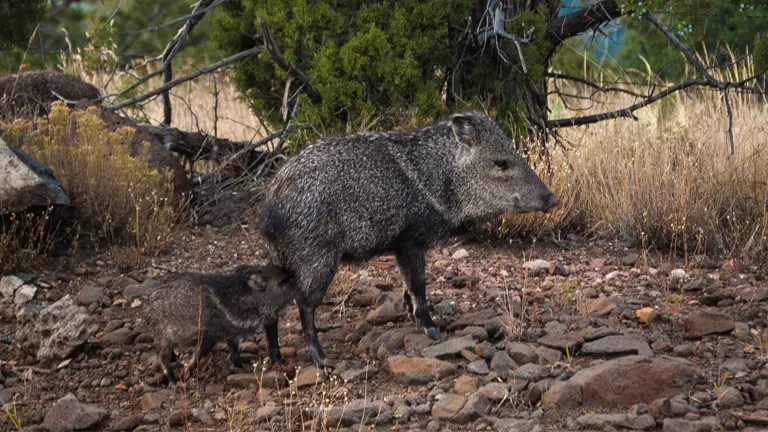
This connectivity ensures the genetic diversity and long-term viability of various animal populations. Moreover, Tonto National Forest shelters habitats crucial for threatened species such as the desert bighorn sheep, Arizona gray squirrel, and the elusive Mexican spotted owl. By offering refuge and resources, the forest plays a key role in the conservation of these species, contributing to broader regional efforts to safeguard biodiversity and preserve the delicate balance of ecosystems within its borders. The forest’s designation as a wildlife corridor underscores its importance not only as a recreational destination but also as a critical lifeline for the diverse and threatened species that call it home.
Activities in Tonto National Forest for Visitors
1. Hiking and Backpacking
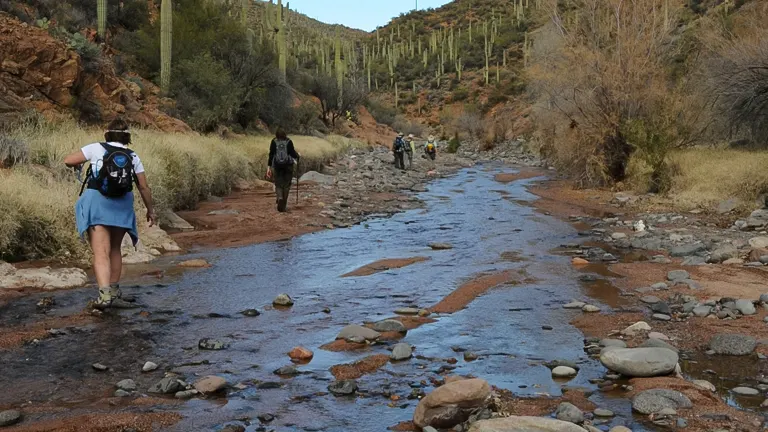
Tonto National Forest offers an extensive network of trails catering to all skill levels, from leisurely nature walks to challenging backcountry hikes. The diverse landscapes provide a picturesque backdrop, with trails leading through Sonoran Desert expanses, along riparian corridors, and into the cool pine forests of the Mogollon Rim. Hikers can discover hidden gems, from ancient petroglyphs to scenic overlooks, creating an immersive experience amidst the natural wonders.
2. Camping
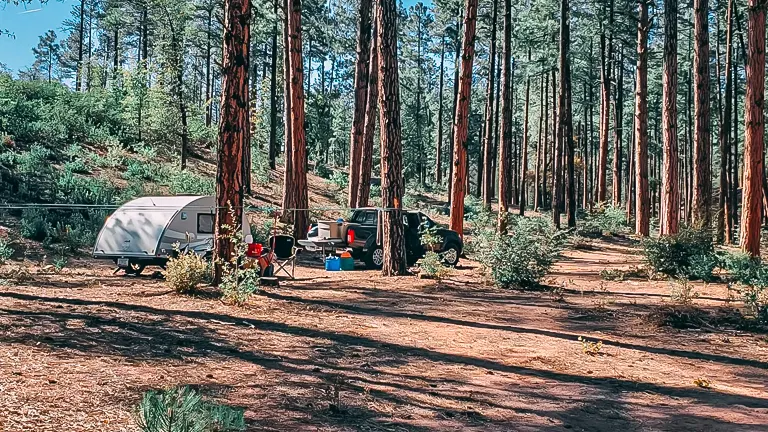
The forest provides numerous campgrounds, ranging from developed sites with amenities to more primitive locations for a true wilderness experience. Camping allows visitors to immerse themselves in the tranquility of the forest, offering starlit skies, the sounds of nature, and the opportunity to wake up surrounded by diverse landscapes. Whether it’s lakeside camping or finding a secluded spot in the backcountry, Tonto National Forest provides an array of options for those seeking a night under the stars.
3. Fishing and Water Recreation
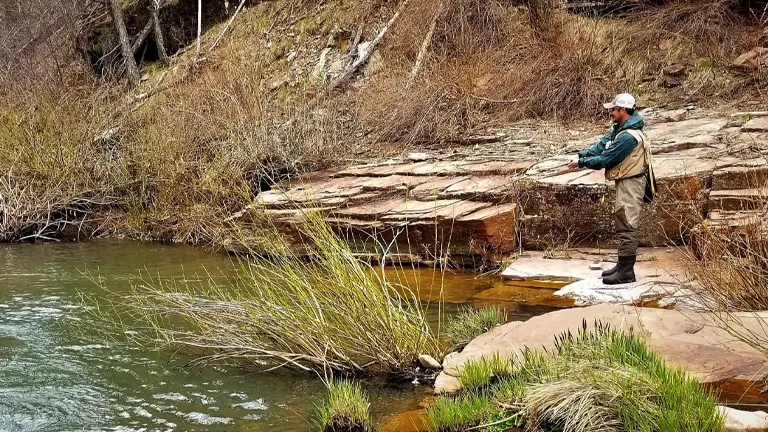
With its six notable cold water reservoirs and the Salt River chain of dams, Tonto National Forest is a haven for fishing enthusiasts and water recreation. Lakes such as Roosevelt, Apache, and Saguaro offer opportunities for boating, kayaking, and paddleboarding. Fishing enthusiasts can try their luck in these pristine waters, which are stocked with a variety of fish species, creating an ideal setting for a day on the water.
4. Wildlife Viewing
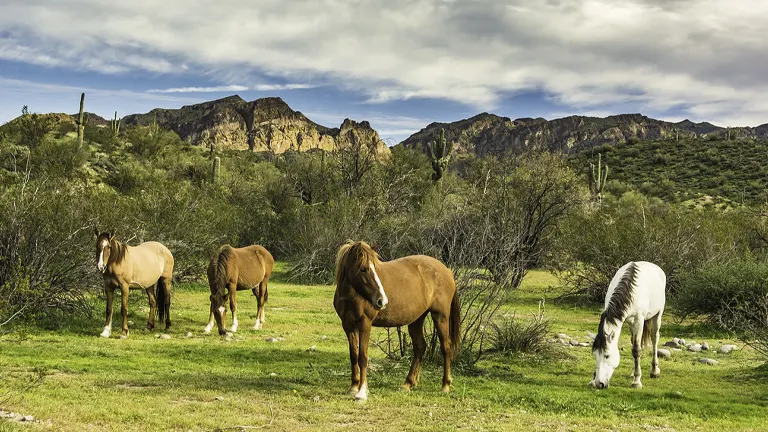
Tonto National Forest’s diverse ecosystems provide an ideal habitat for a rich array of wildlife. Visitors can engage in wildlife watching, with opportunities to spot mule deer, cougars, bobcats, and an impressive variety of bird species. The forest’s status as a wildlife corridor enhances the chances of encountering these creatures in their natural environment, making it a rewarding experience for nature enthusiasts.
5. Off-Roading and OHV Trails
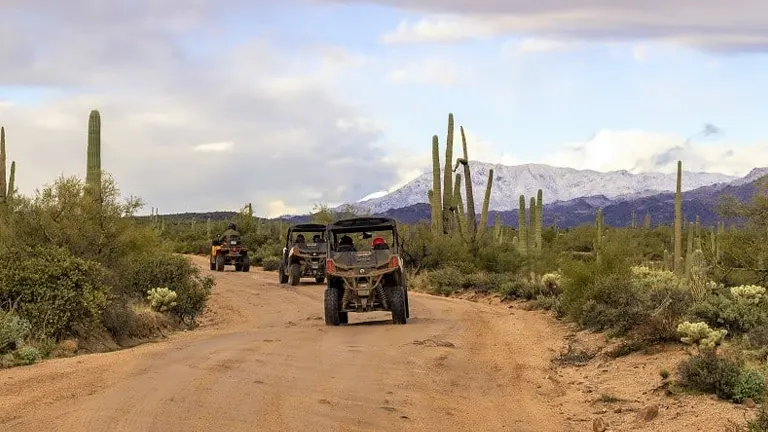
Adventure seekers can explore the rugged terrain of Tonto National Forest through designated off-highway vehicle (OHV) trails. From dirt bikes to 4×4 vehicles, the forest offers a range of trails catering to off-road enthusiasts. These trails wind through desert landscapes, providing an exhilarating way to experience the diverse topography of the region.
6. Rock Climbing and Bouldering
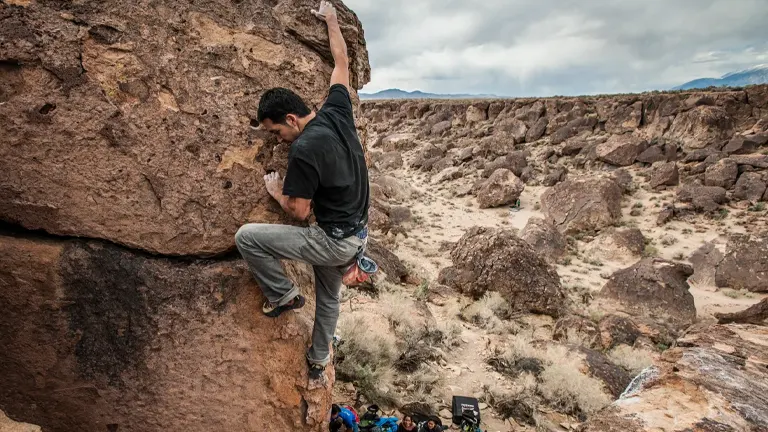
The forest features rock formations and cliffs suitable for rock climbing and bouldering. Climbers can test their skills against the challenging surfaces while surrounded by the stunning scenery of Tonto National Forest. Some areas, such as the Oak Flat Campground, are popular among rock climbing enthusiasts, offering both novice and experienced climbers a thrilling experience.
7. Photography and Scenic Drives
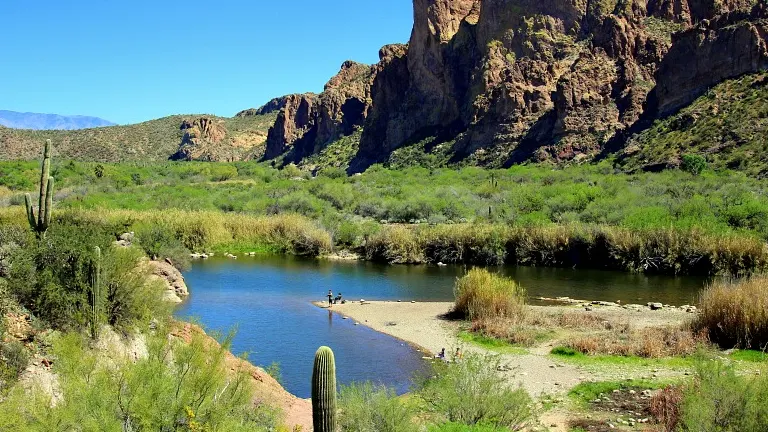
Tonto National Forest presents photographers with a myriad of opportunities to capture the beauty of the American Southwest. Scenic drives, such as the Apache Trail, wind through breathtaking landscapes, offering numerous pull-offs for panoramic views. From the towering saguaros to the picturesque lakeshores, the forest provides a canvas for photographers to capture the diverse beauty of the region.
8. Stargazing and Astronomy
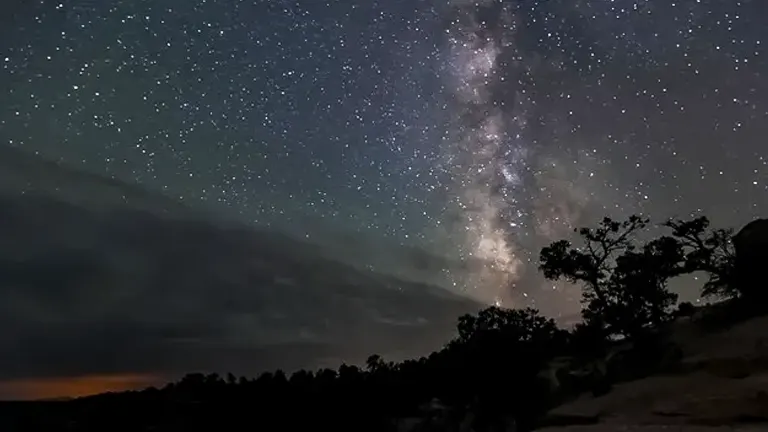
With its expansive and relatively remote areas, Tonto National Forest provides an ideal setting for stargazing. Away from urban light pollution, visitors can witness a spectacular night sky, showcasing the Milky Way and countless stars. Astronomy enthusiasts can bring telescopes to delve deeper into the celestial wonders overhead, creating a truly immersive experience under the vast Arizona sky.
Tonto National Forest’s diverse array of activities caters to a wide range of interests, ensuring that visitors can explore and appreciate the natural wonders of this vast and varied landscape in ways that resonate with their preferences and passions.
Conservation and Management
- Fire Management and Mitigation: Given the arid conditions and the risk of wildfires in the region, Tonto National Forest places a strong emphasis on fire management and mitigation strategies. These efforts include prescribed burns, which help reduce the accumulation of combustible vegetation, enhance ecosystem health, and minimize the impact of uncontrolled wildfires. The forest service also implements fire restrictions during periods of heightened fire danger to ensure visitor safety and protect the natural environment.
- Wildlife Habitat Conservation: Tonto National Forest is committed to conserving and enhancing wildlife habitats to support diverse ecosystems. This involves habitat restoration projects, riparian area protection, and initiatives to maintain connectivity for wildlife movement. By carefully managing these habitats, the forest service aims to ensure the survival of species such as the desert bighorn sheep, Mexican spotted owl, and other fauna dependent on the forest for their livelihood.
- Water Resource Management: The forest’s numerous lakes, rivers, and streams are essential resources that require careful management. Tonto National Forest implements water resource management practices to protect water quality, conserve aquatic habitats, and regulate water use. This includes monitoring water levels, conducting studies on riparian areas, and collaborating with stakeholders to develop sustainable water management strategies.
- Trail Maintenance and Sustainable Recreation: With an extensive network of trails catering to various outdoor activities, Tonto National Forest places a strong emphasis on trail maintenance and sustainable recreation. The forest service works to minimize the impact of human activities on the environment by developing and maintaining trails, installing signage, and educating visitors about responsible recreation practices. This ensures that the forest remains accessible for generations to come.
- Invasive Species Control: Invasive plant species can pose a threat to the natural balance of ecosystems in Tonto National Forest. The forest service implements control measures to address the spread of invasive plants that can outcompete native vegetation, disrupt habitats, and alter the ecological dynamics of the landscape. These efforts aim to protect the integrity of the forest’s native plant communities.
- Cultural Resource Preservation: Tonto National Forest holds significant cultural resources, including ancient Native American dwellings and historical mining sites. The forest service is dedicated to preserving and managing these cultural resources through initiatives such as site stabilization, interpretation programs, and collaboration with indigenous communities. This ensures that the rich cultural history within the forest is respected and shared responsibly.
- Forest Plan Revision and Adaptive Management: Tonto National Forest periodically undergoes forest plan revisions, which serve as comprehensive guides for land and resource management. These plans are developed through extensive public involvement, scientific analysis, and collaboration with stakeholders. Adaptive management strategies are integral to these plans, allowing for adjustments based on changing environmental conditions, emerging threats, and evolving conservation priorities.
- Public Education and Outreach: Conservation in Tonto National Forest is enhanced through public education and outreach programs. The forest service engages with the community, providing information on responsible recreation practices, conservation initiatives, and the importance of preserving the forest’s natural and cultural resources. By fostering a sense of stewardship among visitors, the forest service encourages a shared responsibility for the sustainable use of this precious landscape.
Tonto National Forest’s commitment to conservation and sustainable management reflects a holistic approach to maintaining the ecological health, cultural richness, and recreational value of this vast and diverse natural treasure. Through these varied initiatives, the forest service strives to strike a balance that allows for the enjoyment of its offerings today while ensuring the preservation of its beauty for future generations.
Recommendation
I strongly encourage you to venture into Tonto National Forest for a mesmerizing blend of natural splendor and cultural importance. With its diverse ecosystems, iconic points of interest, and recreational possibilities, the forest provides an unparalleled and immersive adventure. Participate in conscientious outdoor activities like hiking and wildlife observation, contributing to the continuous conservation endeavors. The picturesque trails, historic sites, and collaborative conservation initiatives establish Tonto National Forest as an indispensable destination for those in search of a harmonious fusion of nature and recreational pursuits.
Conclusion
In essence, Tonto National Forest is a breathtaking mosaic of natural beauty, offering a unique blend of desert vistas, lush riparian areas, and towering pine forests. As the largest of Arizona’s national forests and the most visited “urban” forest in the nation, Tonto stands as an accessible sanctuary for both locals and adventurers. Its commitment to responsible recreation, wildlife conservation, and the preservation of cultural heritage highlights its multifaceted role as a haven for outdoor enthusiasts and a guardian of the region’s ecological diversity. With its expansive trail networks, cold water reservoirs, and captivating landscapes, Tonto National Forest beckons all who enter to discover the delicate harmony between humanity and the untamed splendor of the American Southwest.
Encouraging Responsible Visitation
Reflecting on my encounters within Tonto National Forest, I am inspired to advocate mindful exploration. This vibrant and evolving ecosystem flourishes when visitors embrace conscientious interaction. Whether you are a passionate hiker, a photography aficionado, or a family seeking a weekend escape, every moment spent in Tonto National Forest provides an opportunity to actively contribute to its conservation.
FAQs
- What makes Tonto National Forest unique among Arizona’s national forests?
Tonto National Forest stands out as the largest of Arizona’s national forests, encompassing a vast and diverse landscape ranging from the Sonoran Desert to the Mogollon Rim. Its strategic location near the Phoenix metropolitan area makes it the most visited “urban” forest in the United States. - How can I contribute to the conservation efforts in Tonto National Forest?
Visitors can support conservation by adopting responsible recreation practices, staying on designated trails, and respecting wildlife habitats. Volunteering with local forest service initiatives and staying informed about current conservation projects also offers opportunities to actively contribute. - What are some popular activities for families in Tonto National Forest?
Families can enjoy activities like camping in designated sites, exploring nature trails suitable for all ages, and engaging in educational programs offered by forest rangers. The forest’s lakes provide opportunities for family-friendly water activities, making it an ideal destination for a weekend retreat. - Are there any archaeological sites or historical landmarks in Tonto National Forest?
Yes, Tonto National Forest is rich in cultural history, hosting ancient Native American dwellings, petroglyphs, and historic mining sites. The forest service conducts interpretive programs and maintains marked trails, allowing visitors to explore these fascinating archaeological and historical landmarks. - How does Tonto National Forest manage the risk of wildfires?
The forest employs a comprehensive approach to wildfire management, including the use of prescribed burns to reduce fuel loads and mitigate fire risk. During periods of heightened fire danger, fire restrictions may be implemented to ensure visitor safety and protect the forest’s ecosystems. - Can I bring my pets to Tonto National Forest?
Yes, pets are welcome in many areas of Tonto National Forest, but it’s essential to follow guidelines to ensure the safety of both wildlife and pets. Leashes are required in developed recreation sites, and it’s crucial to pack out pet waste to maintain the cleanliness of the forest. - What is the best time of year to visit Tonto National Forest?
The best time to visit depends on personal preferences. Spring and fall offer mild temperatures, blooming wildflowers, and pleasant hiking conditions. Summer provides opportunities for water recreation, while winter offers a quieter experience with cooler temperatures. - Are there designated off-road areas for enthusiasts in Tonto National Forest?
Yes, Tonto National Forest provides designated off-highway vehicle (OHV) trails for enthusiasts. These trails cater to a range of off-road activities, including dirt biking and 4×4 adventures, allowing visitors to explore the rugged and diverse terrain under established guidelines to minimize environmental impact.
In closing, Tonto National Forest, as Arizona’s largest national forest, invites exploration across diverse landscapes, from the Sonoran Desert to the Mogollon Rim. Beyond being a playground for outdoor enthusiasts, it safeguards biodiversity, cultural heritage, and responsible recreation. Whether hiking, camping, or supporting conservation, Tonto National Forest embodies the harmonious coexistence of humanity and the untamed beauty of the American Southwest—a sanctuary calling all to join in preserving this natural treasure for future generations.


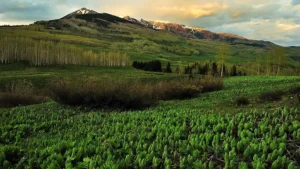

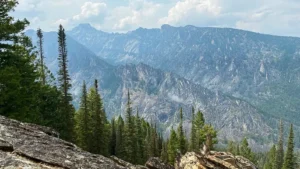
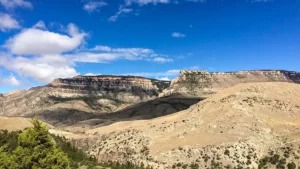


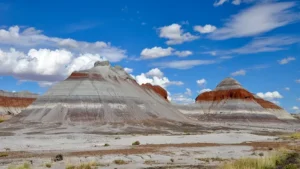



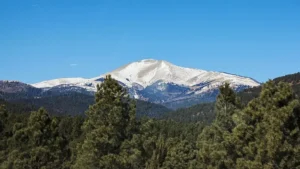
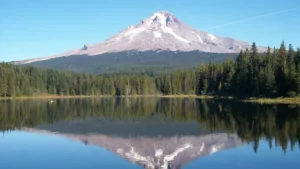
Leave your comment